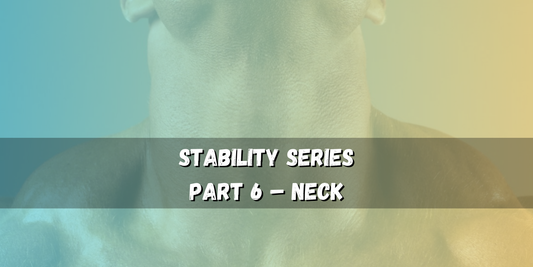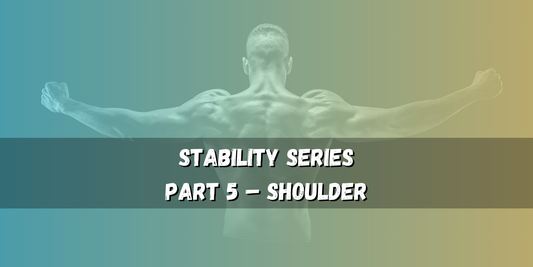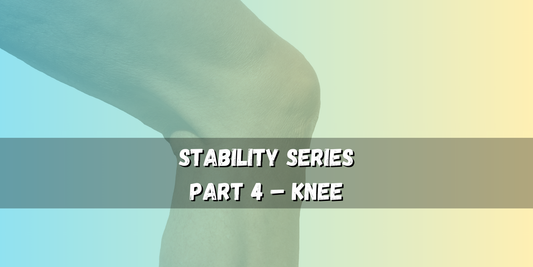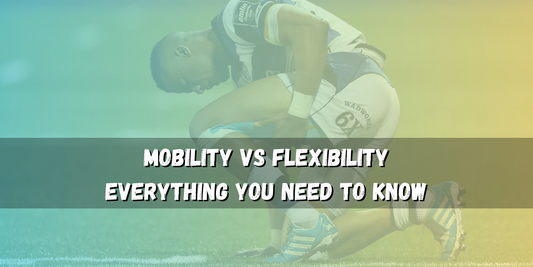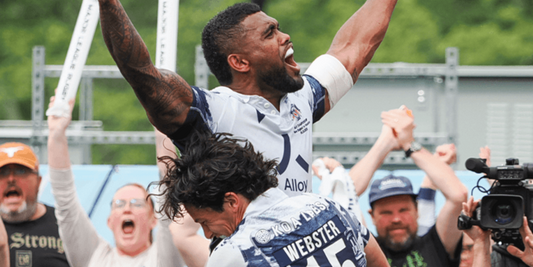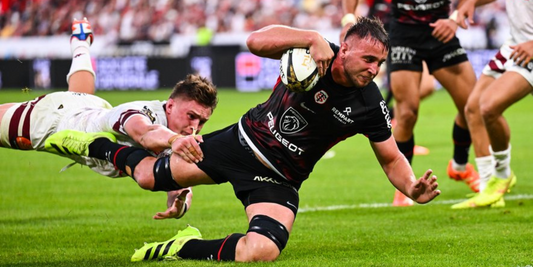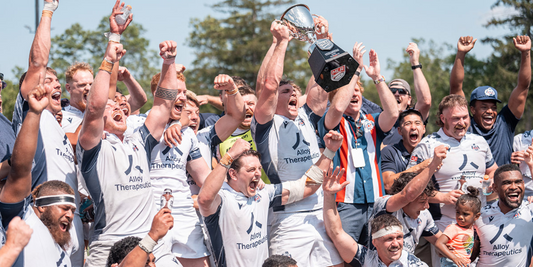The neck might not be the first area that comes to mind when you think about stability—but in a collision sport like rugby, it should be. Your neck plays a vital role in protecting your spine, reducing concussion risk, and absorbing the impact of contact. It’s small, but powerful—and it deserves attention.
In the final part of our Stability Series, we’re focusing on neck stability—why it matters, how to train it, and how it keeps athletes safer in high-impact situations.
Check out the rest of the series:
- Part 1: Core Stability – Strength & Control
- Part 2: Hip Stability – Power & Alignement
- Part 3: Ankle Stability – Balance & Support
- Part 4: Knee Stability – Control & Protection
- Part 5: ShoulderStability – Contact & Strength
Let’s dive in.
WHAT IS NECK STABILITY?
Neck stability refers to your ability to control and support the cervical spine (neck region) during both static posture and dynamic movement. It’s about building strength and coordination in the muscles surrounding the neck to keep your head, spine, and nervous system safe.
Key muscles involved:
- Deep Neck Flexors – Control forward posture and stabilize the cervical spine
- Upper Traps & Levator Scapulae – Support the neck and upper back during load
- Scalenes & Sternocleidomastoid – Assist in head movement and stabilization
- Suboccipitals & Multifidus – Fine-tune spinal alignment and reflex control
These muscles work together to stabilize the head and protect the brain and spine during rapid movement or impact.
WHY NECK STABILITY MATTERS FOR RUGBY PERFORMANCE
1. Concussion & Whiplash Prevention
A stronger neck can reduce head acceleration during impact, lowering the chance of concussions or whiplash.
2. Contact Readiness
Tackles, rucks, and scrums all put the neck under stress. Stability helps you brace and absorb force safely.
3. Postural Endurance
Neck fatigue can lead to poor head posture, which impacts spinal alignment and decision-making under pressure.
4. Head Positioning & Awareness
A stable neck improves head control, vision on the field, and overall body awareness.
COMMON CAUSES OF NECK INSTABILITY
- Here are the most common causes of poor neck stability:
- Weak or underdeveloped deep neck flexors (especially in youth athletes)
- Forward head posture from prolonged screen time or poor standing/sitting alignment
- Lack of postural awareness and head control in contact situations
- Over-reliance on upper traps and poor neuromuscular control
- Limited cervical mobility from tight muscles and previous injuries
These factors not only reduce stability but increase the likelihood of concussion, whiplash, and chronic neck tension under pressure.
THE CHAIN REACTION: WHAT HAPPENS WITHOUT NECK STABILITY
- Weak Deep Neck Flexors → Forward Head Posture → Spine Misalignment & Headaches
- Poor Control During Contact → Increased Concussion Risk
- Overactive Traps & Tension → Neck Pain, Tightness & Nerve Irritation
- Fatigue Under Pressure → Delayed Reactions & Poor Tackle Position
Neck issues don’t just hurt—they increase the risk of serious injuries during high-speed collisions.
NECK STABILITY ROUTINE FOR RUGBY ATHLETES
Neck training should be simple, consistent, and controlled—especially for young athletes. It doesn’t require fancy tools, just intent.
Step 1: Isometric Neck Holds (3–5 Minutes)
- Focus: Build foundational strength and control
- Exercises: Chin Tuck Hold (Lying or Standing), Wall Isometric Press – Front, Side, Back, Quadruped Head Hover (Neutral Head Control)
Step 2: Neck Movement & Coordination (3–5 Minutes)
- Focus: Improve range of motion and reflexes
- Exercises: Slow Controlled Neck Rotations & Nods, Band-Resisted Lateral Head Rotations, Eyes Closed Balance with Head Turns (Body Awareness Drill)
Step 3: Contact Prep & Posture (2–3 Minutes)
- Focus: Train posture under fatigue and simulate game positions
- Exercises: Prone Neck Extensions (Face Down Holds), Loaded Carry with Neutral Head Position Bear Crawl with Head Control Awareness
Train 2x/week or as part of warm-up for contact-focused sessions.
FINAL THOUGHTS
Neck stability might not be flashy—but it’s a game-changer. It’s your helmet under the skin. Every tackle, every scrum, every ruck tests your ability to hold position and protect your most important structure: your spine.
Train it. Respect it. Protect it.
This wraps up our Stability Series If you found this post helpful, make sure to:
- Like and share this post with fellow rugby players
- Bookmark the blog to stay updated on the next parts of the series
-
Follow Peak Rugby on X, Facebook and subscribe to the YouTube Channel for more rugby-specific training, mobility, and recovery tips.
Stay strong, keep pushing forward, and keep working on your stability!








